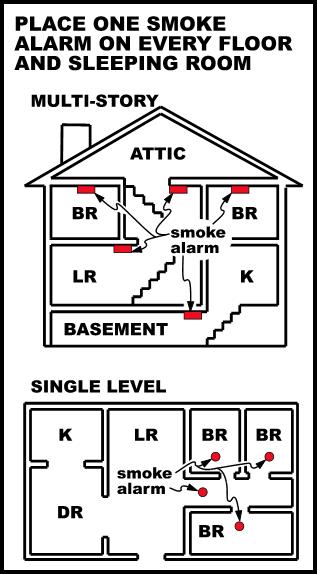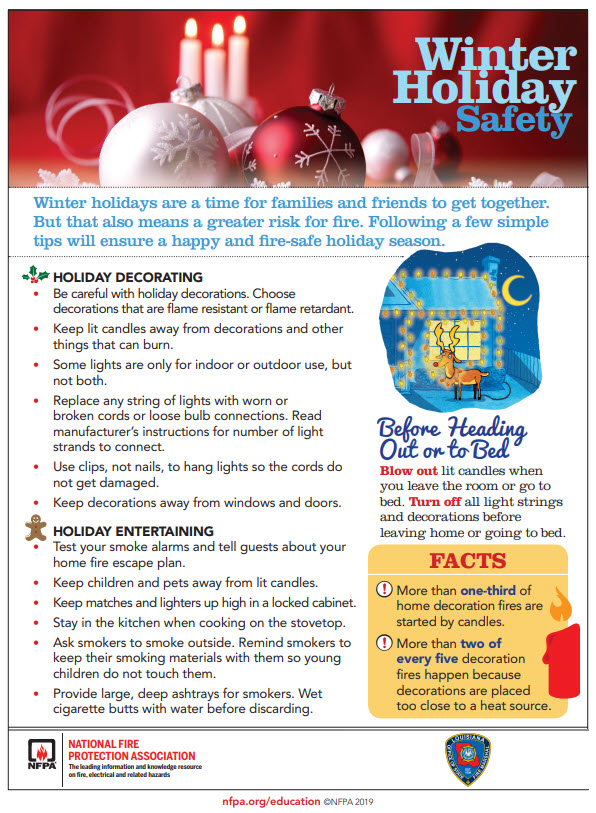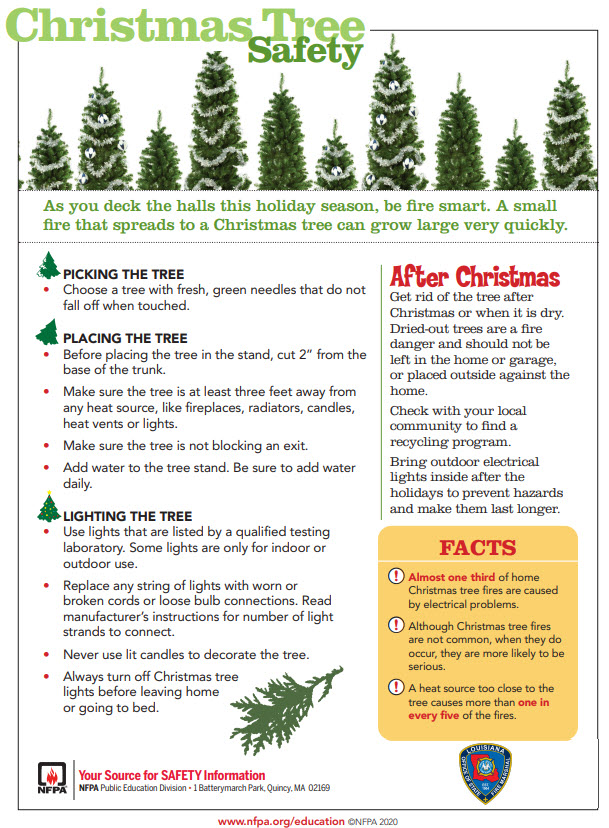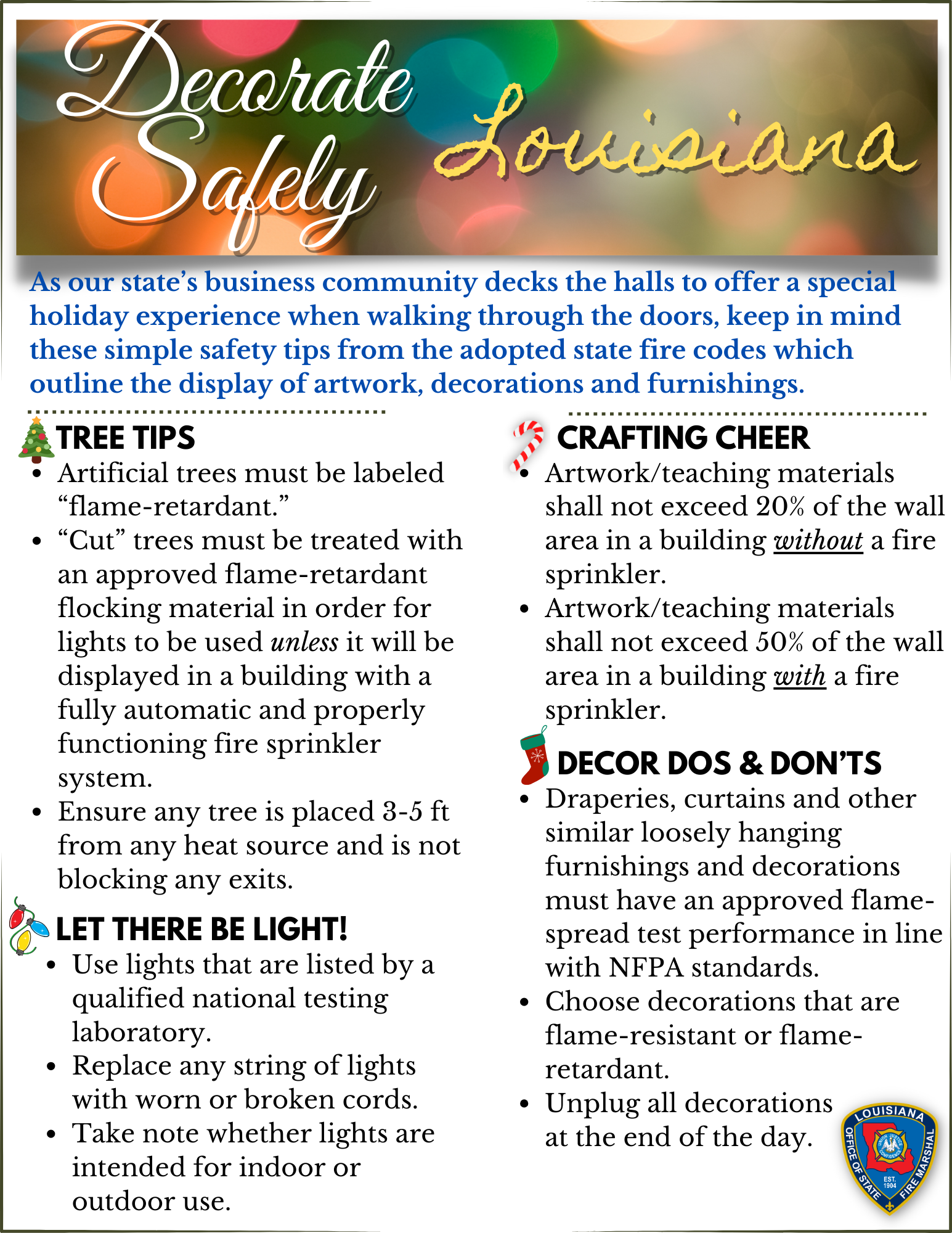Home Safety: Protect Your Home & Loved Ones from Fire
Fire Prevention in the Home
Knowing what to do in the event of a fire is extremely important, but so is the prevention of home fires in the first place. There are many things you can do to prevent fires in the home, especially during the holidays. Use the links and information provided below to make sure your home is as fire safe as possible.
Be sure to check out the numerous fact sheets provided by both the NFPA and USFA with fire safety information concerning a number of home items, circumstances, and seasonal topics imperative to fire safety. Get your kids involved and interested in fire prevention at Sparky's School House.
Home Fire Safety Checklist
Cooking Fire Safety Tips
All About Smoke Alarms
 The two most common type of household smoke alarms are known as ionization and photoelectric.
The two most common type of household smoke alarms are known as ionization and photoelectric.
An ionization smoke alarm ioinizes air in the sensing chamber by using a small amount of radioactive material creating a conductive environment between two charged electrodes also in the smoke alarm. Smoke entering the chamber decreases the air in the chamber; after this reaches a predetermined level the alarms sounds. Most smoke alarms in homes are ionization smoke alarms.
A photoelectric smoke alarm is made up of a light-sensitive sensor and a light-emitting diode. Smoke entering the chamber fractures the light beam, and the alarm will sound.
Neither alarm is necessarily more effective than the other. Each operates and responds differently to various conditions and principles. Some advantages to each are listed below, from information found online:
Ionization
- Fastest type to respond to flaming fires
- Lowest cost and most commonly sold
- Some models have a hush or temporary silence feature that allows silencing without removing the battery
- Some models are available with a long life battery
Photoelectric
- Fastest type to respond to slow smoldering fires and white or gray smoke
- Less prone to nuisance alarms from cooking
The U.S. Fire Administration (USFA) recommends that all homes or places where people sleep be equipped with either both ionization and photoelectric smoke alarms or dual sensor smoke alarms.
Smoke alarm batteries must be changed; pick a time once a year that is easy for you to remember (birthday, seasonal time change, etc.) to change your batteries. If your smoke alarm begins to make a chirping noise, replace the batteries or upgrade to a unit with a 10-year lithium battery.
The National Fire Protection Association (NFPA) also has information on alarms and escape plans for those that are deaf or are hard of hearing.
Operation Save-A-Life is a program that partners the State Fire Marshal's Office with local fire departments to install free smoke alarms for families that need help obtaining the life-saving devices.
Fire Escape Planning
It is essential to have a Fire Safety Plan for your family, and - even more importantly - to practice it; make it something that everyone in the family knows to follow in the event of a fire in the home. Practice the plan with your children until they know it by heart. This simply can't be stressed enough. Many children's deaths due to home fires are preventable if the child knows what to do if a fire breaks out in the home.
From About.com's Fire Safety for your Family page:
Although a smoke alarm should warn you when there is a fire, you still need to get your family out. Does everyone in your family know what to do, how to get out of the house and where to go?
A home fire escape plan is especially important because recent reports have shown that smoke alarms may not wake up many sleeping children.
As part of your home fire escape plan, you should figure out two ways to escape from each part of your home. This is important because your most obvious exit may be blocked by the fire. Do you have a ladder to get out of second floor windows.
Making a drawing of your plan may be helpful for younger kids.
You should also have a plan for how each family member is going to get out. While older children and teens can likely be responsible for their own escape, younger kids, elderly family members and anyone with a disability may need help escaping. Designating a 'buddy' to give assistance to those who need it can help to make sure that everyone gets out safely.
Lastly, plan a place outside the home where everyone is supposed to meet once they get out.
Both the NFPA and USFA have useful tools and information concerning escape with respect to several situations, including:
- Basic Fire Escape Planning
- Escape Planning for People With Disabilities
- Escape Planning for Older Adults
- Escape Planning for Pets
- Fire Safety in Manufactured Homes
- Security Bars (sometimes a device that prevents one hazard creates another)
Remember, all of the planning in the world is for naught if it is not Practiced & Put Into Action! Go over your Escape Plans with your family and practice them at least every six months, if not more. Be sure that everyone in the family knows the "get out" plan, what to do, and where to meet in the event of fire. Your loved ones' lives depend upon it.
October is Fire Prevention Month
During Fire Prevention Week, fire and life safety educators around the State of Louisiana will bring important safety messages to their community on burn awareness and prevention, as well as keeping homes safe from the leading cause of home fires.
Louisiana citizens are encouraged to test their smoke alarms and practice their fire escape plans.
Learn More About Fire Prevention Week!

If you take anything at all from away the information provided here, please let it be this: Smoke Alarms DO Work and keeping & practicing a Family Escape Plan is one of the most important things you can do with your family.
Studies throughout the years have proven - time and time again - that smoke alarms save lives; thousands of lives a year, in fact. Statistics show that homes with smoke alarms typically have a death rate that is 40-50% less than the rate for homes without alarms. Not only are having smoke alarms in your home vital, but proper installation, upkeep, and placement are important factors as well. Having a Family Escape Plan is also essential; as is regular practice of the plan so that everyone remembers what to do in case of an emergency.
The information on this page is here to educate, inform, and help you learn more about fire safety, to guide you in becoming more aware of its essentiality, and to edify the explicit need for fire safety items and procedures in every home.
The United States Fire Administration (USFA) has a wealth of materials for use by national, state and local organizations to share the message of safety with their communities.
Decorate Safely, Louisiana!
In the Home


In a Business/School

This page was last modified on
January 10, 2024